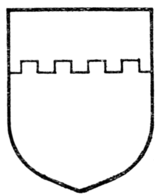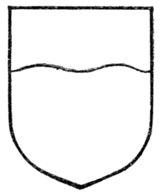THE SO-CALLED ORDINARIES
133
indicate the greater area often given to it under these conditions, as in the arms of Ross-of-Bladensburg (Plate II.).
Knights of the old Order of St. John of Jerusalem and also of the modern Order of the Hospital of St. John of Jerusalem in England display above their personal arms a chief of the order, but this will be dealt with more fully in the chapter relating to the insignia of knighthood.
Save in exceptional circumstances, the chief is never debruised or surmounted by any ordinary.
The chief is ordinarily superimposed over the tressure and over the bordure, partly defacing them by the elimination of the upper









